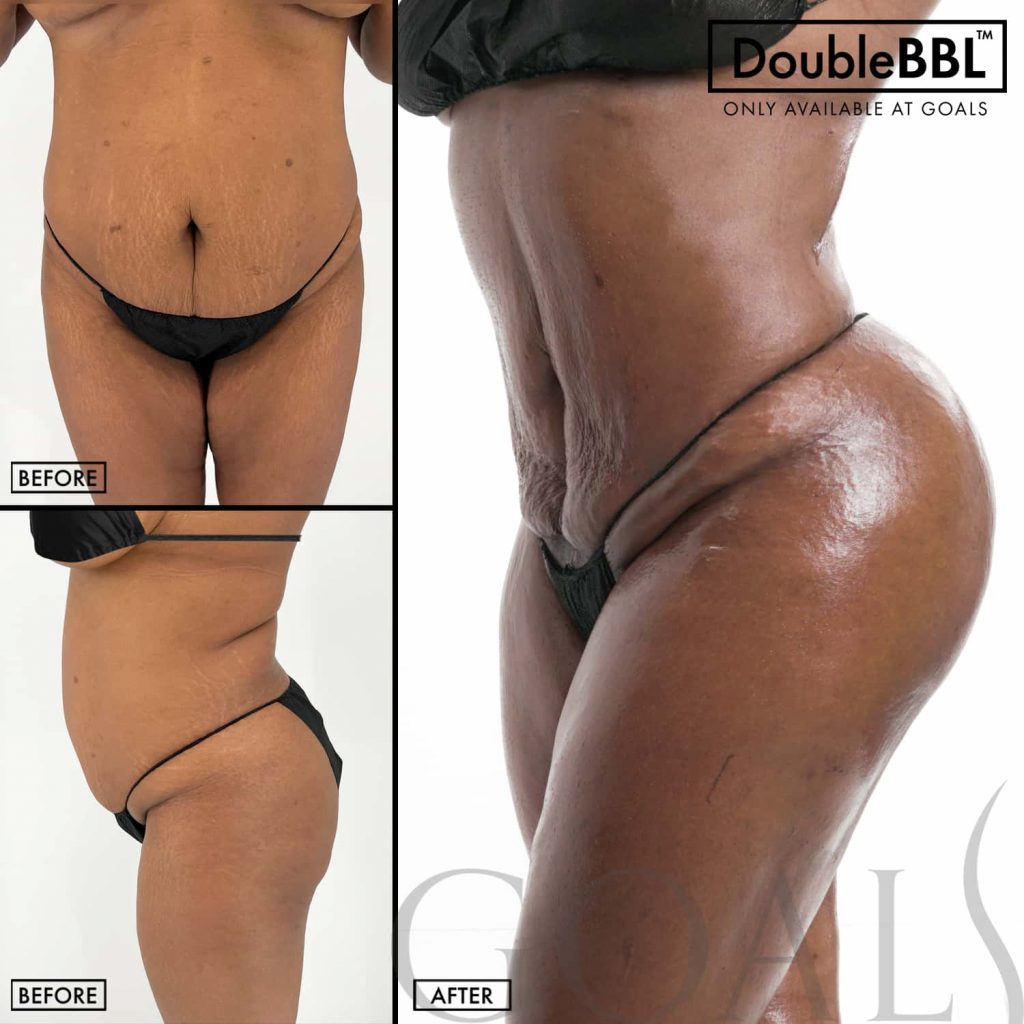Ready to enhance your appearance and achieve your aesthetic aspirations? Look no further than plastic surgery. Whether you’re seeking to slim down with liposuction, restore youthfulness with a facelift, or reshape your nose with rhinoplasty, New York City offers a plethora of options to meet your cosmetic goals. From experienced surgeons to state-of-the-art facilities, the bustling city provides everything you need to turn your dreams into reality. Say goodbye to insecurities and hello to a confident, rejuvenated you. Your journey to self-improvement starts here.

This image is property of goalsplasticsurgery.com.
Understanding Plastic Surgery
plastic surgery is a medical specialty that aims to improve a person’s appearance or enhance their physical features through surgical procedures. It involves the reconstruction or alteration of the body parts, typically the face or body, to improve aesthetic appeal. Plastic surgery is a broad field that offers various procedures tailored to individual needs and desires.
Different types of plastic surgery procedures
There are numerous plastic surgery procedures available to address different aesthetic concerns. Some of the most common procedures include breast augmentation, rhinoplasty, liposuction, facelift, and tummy tuck. Each procedure focuses on enhancing a specific area of the body to achieve the desired aesthetic goals.

This image is property of goalsplasticsurgery.com.
How plastic surgery can help in achieving aesthetic goals
Plastic surgery can be a valuable tool in achieving aesthetic goals. Whether you desire a more proportionate body shape, a refined facial feature, or a rejuvenated appearance, plastic surgery procedures can help you achieve the physical changes you desire. These procedures can boost your self-confidence, improve your self-image, and enhance your overall quality of life.
Choosing the Right Procedure
When considering plastic surgery, it is crucial to choose the right procedure that aligns with your goals and concerns. Consulting with a plastic surgeon who specializes in the desired procedure is the first step in this process. During the consultation, the plastic surgeon will assess your individual needs, discuss your goals and concerns, and recommend the most suitable procedure for you.

This image is property of goalsplasticsurgery.com.
Consultation with a plastic surgeon
A consultation with a plastic surgeon is a crucial step in understanding the procedure options available to you. During the consultation, the plastic surgeon will evaluate your medical history, examine the specific area of concern, discuss your desired outcome, and explain the surgical approach. This consultation gives you the opportunity to ask any questions and address any concerns you may have.
Considering your individual goals and concerns
Your individual goals and concerns play a significant role in selecting the right procedure. Whether you are looking for breast augmentation to enhance your breast size and shape, rhinoplasty to improve the appearance of your nose, or liposuction to eliminate stubborn pockets of fat, it is important to communicate your goals clearly with your plastic surgeon. They will help you determine if your expectations are realistic and guide you towards the most suitable procedure.

This image is property of assets.settyplastics.com.
Understanding the potential risks and benefits
It is essential to have a thorough understanding of the potential risks and benefits associated with plastic surgery. While plastic surgery can yield transformative results, it is not without risks. Complications such as infection, bleeding, scarring, and unfavorable outcomes are possible. However, with proper preoperative evaluation and postoperative care, these risks can be minimized. Your plastic surgeon will discuss the potential risks and benefits with you, enabling you to make an informed decision.
Popular Plastic Surgery Procedures for Aesthetic Goals
Breast augmentation
Breast augmentation is a commonly sought after procedure for those wishing to enhance the size and shape of their breasts. This procedure involves the use of implants to increase breast volume, improve symmetry, or restore lost breast fullness. The result is a more proportionate and aesthetically pleasing breast appearance.
Rhinoplasty
Rhinoplasty, commonly known as a nose job, is a procedure aimed at improving the appearance and functionality of the nose. It can address concerns such as a hump on the bridge, a crooked nose, or an oversized or misshapen tip. Rhinoplasty can help create a nose that harmonizes with the facial features and enhances overall facial balance.
Liposuction
Liposuction is designed to remove excess fat deposits from specific areas of the body, such as the abdomen, thighs, hips, or arms. It sculpts the body by permanently eliminating stubborn fat cells that are resistant to diet and exercise. Liposuction can help you achieve a slimmer and more defined body contour, boosting your confidence and enhancing your self-image.
Facelift
A facelift, also known as rhytidectomy, is a surgical procedure that aims to rejuvenate the face and neck. It targets sagging skin, deep creases, jowls, and excess fat deposits. A facelift can provide a smoother, firmer, and more youthful facial appearance by tightening the underlying muscles and removing excess skin, resulting in a refreshed and rejuvenated look.
Tummy tuck
A tummy tuck, or abdominoplasty, is a procedure that improves the contour of the abdomen. It removes excess skin, tightens weakened abdominal muscles, and eliminates stubborn fat deposits. A tummy tuck can be particularly helpful for individuals who have undergone significant weight loss or experienced changes in their abdominal area due to pregnancy or aging.

This image is property of i.ytimg.com.
Preparing for Plastic Surgery
Researching and selecting a reputable plastic surgeon
When preparing for plastic surgery, it is essential to research and select a reputable plastic surgeon. Look for board certification, which ensures that the surgeon has met specific standards of training and competency. Consider their experience, expertise, and specialization in the procedure you are considering. Reading patient reviews and testimonials can also provide valuable insights into others’ experiences with the surgeon.
Scheduling consultations and discussing expectations
Scheduling consultations with potential plastic surgeons allows you to discuss your expectations and concerns. During these consultations, ask about the surgeon’s approach, their success rate, and any potential complications associated with the procedure. Ensure that the surgeon understands your goals and that you have a clear understanding of what can be realistically achieved through the surgery.
Understanding the preoperative instructions and necessary preparations
Before undergoing plastic surgery, you will receive specific preoperative instructions from your plastic surgeon. These instructions may include guidelines for medications, smoking cessation, avoiding certain products, and adjusting your diet. It is crucial to follow these instructions meticulously to optimize your safety during the surgery and enhance your recovery process.
The Procedure and Recovery Process
Anesthesia options
The choice of anesthesia for plastic surgery procedures depends on various factors, including the extent of the procedure, your medical history, and your comfort level. Your plastic surgeon will discuss the anesthesia options with you, which can range from local anesthesia with sedation to general anesthesia. They will consider your safety, comfort, and individual needs when determining the most appropriate anesthesia approach for you.
Surgical procedure details
The surgical procedure details vary depending on the specific plastic surgery procedure you undergo. Your plastic surgeon will explain the procedure, including the incision techniques, the expected duration of the surgery, and the steps involved. They will address any concerns you may have, ensuring that you have a clear understanding of what will occur during the procedure.
Recovery timeline and aftercare steps
The recovery process after plastic surgery will differ depending on the procedure performed. Your plastic surgeon will provide you with a detailed recovery timeline, outlining the expected postoperative course and the necessary aftercare steps. This may include instructions for wound care, activity restriction, pain management, and follow-up appointments. It is crucial to follow these instructions diligently to promote proper healing and optimize your results.
Managing Expectations and Realistic Goals
Setting realistic expectations
It is vital to set realistic expectations when considering plastic surgery. While these procedures can result in significant improvements, it is important to understand their limitations. Plastic surgery can enhance your natural features and address specific concerns, but it cannot entirely change your appearance or guarantee perfection. Discuss your expectations thoroughly with your plastic surgeon to ensure that they align with achievable outcomes.
Understanding the limitations of plastic surgery
Plastic surgery has its limitations. It is crucial to understand that the results of plastic surgery are influenced by various factors, including your anatomy, skin quality, healing process, and lifestyle choices. While a skilled plastic surgeon can create natural-looking results, it is important to have realistic expectations and understand that the outcome may not be identical to someone else’s results.
Real-life examples of successful outcomes
Numerous individuals have achieved successful outcomes through plastic surgery. By looking at before and after photos and reading personal stories, you can gain a better understanding of the potential results. Keep in mind that each person’s experience and results are unique. Consultation with a plastic surgeon is the best way to determine the potential results specific to your case.
Potential Risks and Complications
General risks of plastic surgery
Plastic surgery, like any surgical procedure, carries general risks and complications. These risks can include infection, bleeding, scarring, poor wound healing, adverse reactions to anesthesia, and unsatisfactory results. However, by choosing a qualified plastic surgeon and following all preoperative and postoperative instructions, these risks can be minimized.
Specific risks associated with different procedures
Certain plastic surgery procedures have specific risks associated with them. For example, breast augmentation may carry risks such as capsular contracture, implant rupture, or changes in nipple or breast sensation. Rhinoplasty can involve risks such as breathing difficulties, nasal asymmetry, or persistent swelling. It is essential to discuss these risks with your plastic surgeon before making a decision.
Minimizing risks and ensuring safety
To minimize the risks associated with plastic surgery, it is crucial to choose a board-certified plastic surgeon who has extensive experience and expertise in the procedure you are considering. Follow all preoperative and postoperative instructions provided by your surgeon, as they are designed to optimize safety and reduce the likelihood of complications. Maintain open communication with your surgeon throughout the entire process to address any concerns or questions that may arise.
Costs and Financing Options
Factors influencing plastic surgery costs
The cost of plastic surgery can vary depending on several factors. These factors may include the complexity of the procedure, the surgeon’s experience and reputation, the geographical location of the practice, the type of anesthesia used, and the required postoperative care. It is essential to discuss the cost with your plastic surgeon during the initial consultation to determine the specific financial considerations for your desired procedure.
Insurance coverage considerations
In most cases, plastic surgery procedures that are purely cosmetic in nature are not covered by health insurance. However, if the procedure is performed to address functional or medical issues, there may be a possibility of insurance coverage. Consult with your surgeon and insurance provider to understand the coverage and reimbursement options available to you.
Exploring financing options
If the cost of the desired plastic surgery procedure is a concern, many financing options are available. Some plastic surgeons offer in-house financing or payment plans, allowing you to spread the cost over time. Additionally, there are external financing options such as personal loans or medical credit cards that can help make plastic surgery more affordable. Discuss these options with your surgeon and explore what best suits your financial needs.
Finding a Qualified Plastic Surgeon
Researching credentials and certifications
When searching for a qualified plastic surgeon, it is vital to research their credentials and certifications. Ensure that the surgeon is board-certified by reputable plastic surgery organizations, as this certification indicates their expertise and adherence to high standards of patient care. Online resources such as the American Society of Plastic Surgeons (ASPS) or the American Board of Plastic Surgery (ABPS) can provide information on the credentials and certifications of plastic surgeons.
Reading patient reviews and testimonials
Patient reviews and testimonials can provide valuable insights into a plastic surgeon’s reputation and patient satisfaction. Reading about other patients’ experiences can help you gauge the surgeon’s skill, communication style, and overall patient care. While online reviews should be approached with caution, they can be a useful tool in your decision-making process.
Seeking recommendations from trusted sources
Another reliable method for finding a qualified plastic surgeon is seeking recommendations from trusted sources. Reach out to friends, family members, or healthcare professionals who have had personal experiences or have knowledge of reputable plastic surgeons. Their firsthand recommendations can be invaluable in selecting the right surgeon for your desired procedure.
Alternative Non-Surgical Options
Non-invasive treatments for aesthetic enhancements
In addition to surgical options, non-surgical treatments have gained popularity for aesthetic enhancements. These non-invasive procedures, such as dermal fillers, Botox injections, laser treatments, and chemical peels, can provide noticeable improvements with minimal downtime. Non-surgical treatments are suitable for individuals who prefer a less invasive approach or who may not be suitable candidates for surgery.
Benefits and limitations of non-surgical procedures
Non-surgical procedures offer several benefits, including minimal downtime, less discomfort, and quicker recovery compared to surgery. They can address concerns such as wrinkles, volume loss, skin laxity, and uneven skin tone. However, it is important to note that non-surgical treatments are often temporary and may require recurring sessions to maintain the desired results. They may be less effective for individuals with more significant aesthetic concerns.
Consulting with a non-surgical specialist
When considering non-surgical options, it is advisable to consult with a specialist who has expertise in non-invasive aesthetic treatments. A qualified specialist will assess your individual needs, discuss the available options, and recommend the most suitable treatments for your specific concerns. They will also explain the potential outcomes, limitations, and any associated risks to help you make an informed decision.
In conclusion, plastic surgery offers a range of procedures to help individuals achieve their aesthetic goals. Understanding the different types of procedures, consulting with a qualified plastic surgeon, and managing expectations are crucial steps in the process. Whether you opt for a surgical procedure or explore non-surgical options, thorough research, and careful consideration are essential to ensure a positive and satisfying outcome. By selecting a reputable plastic surgeon and following all pre-operative and post-operative instructions, you can embark on your journey towards achieving your aesthetic goals with confidence.

